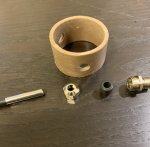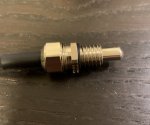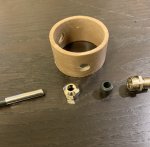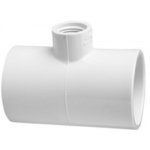Hope you don't mind me sayin'... I'm not lovin' a tap into a PVC pipe wall. It's the kind of thing that will work at first, and for a while, with even a slim chance of working for a long while. But there's a lot that can go wrong. Firstly, it's SOP to thread plastic (male) into metal (female), not the other way around. Secondly, the tap is only offering a few threads (turns), which is not ideal. You've also got some forces in play: you've got two different materials (metal and plastic), subject to different expansion/contraction rates, with a full range of temps bombarding it, both from the inside (water) and the outside (weather). And you've got a metal "fulcrum" that is just asking to get knocked into, which could weaken or even strip out those few threads. Then there's the o-ring, sandwiched between a flat surface and a round one, also not ideal.
Previously in this thread you were advised how to use a T, and even though that's still metal threads inside PVC threads, it would give you a whole lot more threads. And then there's the setup that uses a SS band to bind the sensor to the pipe (that's how mine is). Either of those methods would be far superior than the tap, IMO. Not only would the original install be more reliable, but subsequent replacements would also be less prone to failure (like when you have to take out the sensor and thread a new one in, further weakening the PVC threads each time you do).
It's not about what will work "OK" when you first put it together, it's about how well, and how long, it will work after being subjected to foreseeable and unforeseeable forces.
Do it right, do it once...
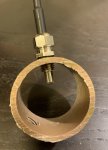 and it gives a perfect fit.
and it gives a perfect fit.